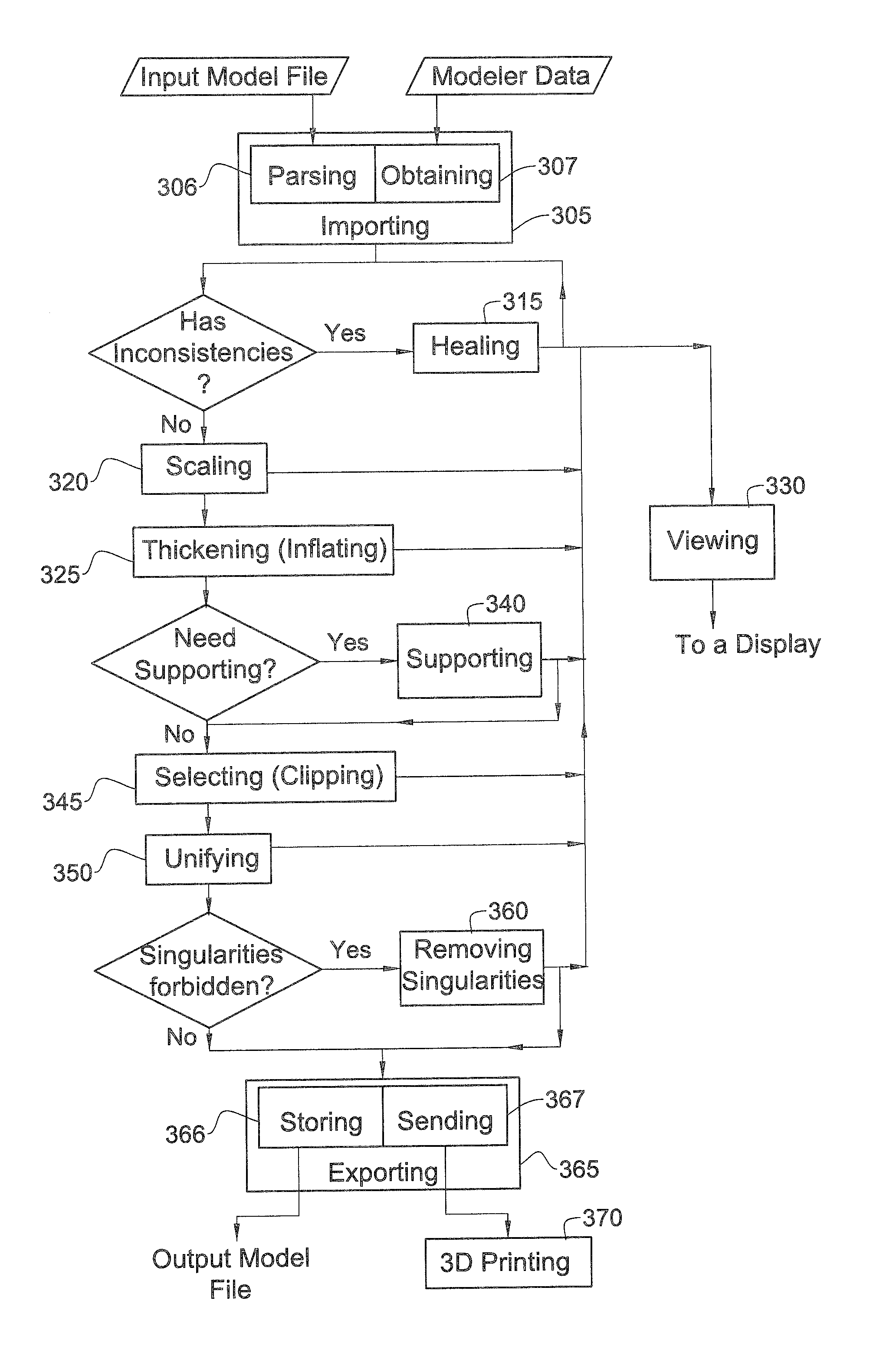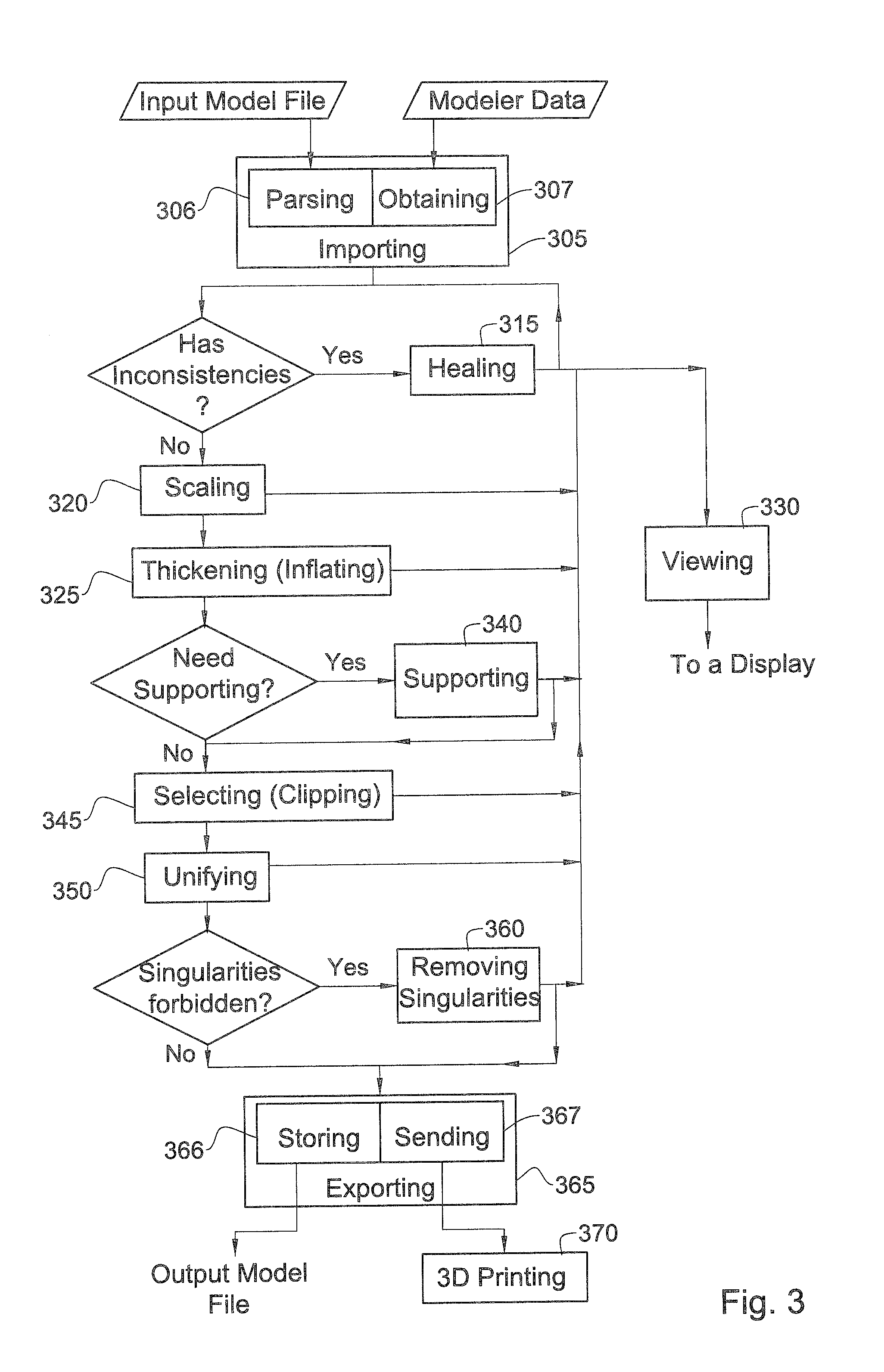Methods and system for enabling printing three-dimensional object models
a technology of three-dimensional objects and models, applied in the field of methods and systems for transforming three-dimensional digital models, can solve problems such as errors and inconsistencies in 3d models, whether created by hand or by automatic tools, and inconsistencies in topological information,
- Summary
- Abstract
- Description
- Claims
- Application Information
AI Technical Summary
Benefits of technology
Problems solved by technology
Method used
Image
Examples
Embodiment Construction
[0085]Unless specifically stated otherwise, as apparent from the following discussions, it is appreciated that throughout the specification discussions utilizing terms such as “processing”, “computing”, “calculating”, “determining”, or the like, refer to the action and / or processes of a computer that manipulate and / or transform data into other data, said data represented as physical, e.g. such as electronic, quantities. The term “computer” should be expansively construed to cover any kind of electronic device with data processing capabilities, including, by way of non-limiting example, personal computers, servers, computing systems, communication devices, processors (e.g. digital signal processor (DSP), microcontrollers, field programmable gate array (FPGA), application specific integrated circuit (ASIC), etc.) and other electronic computing devices. Also, operations in accordance with the teachings herein may be performed by a computer specially constructed for the desired purposes...
PUM
 Login to View More
Login to View More Abstract
Description
Claims
Application Information
 Login to View More
Login to View More - R&D
- Intellectual Property
- Life Sciences
- Materials
- Tech Scout
- Unparalleled Data Quality
- Higher Quality Content
- 60% Fewer Hallucinations
Browse by: Latest US Patents, China's latest patents, Technical Efficacy Thesaurus, Application Domain, Technology Topic, Popular Technical Reports.
© 2025 PatSnap. All rights reserved.Legal|Privacy policy|Modern Slavery Act Transparency Statement|Sitemap|About US| Contact US: help@patsnap.com



